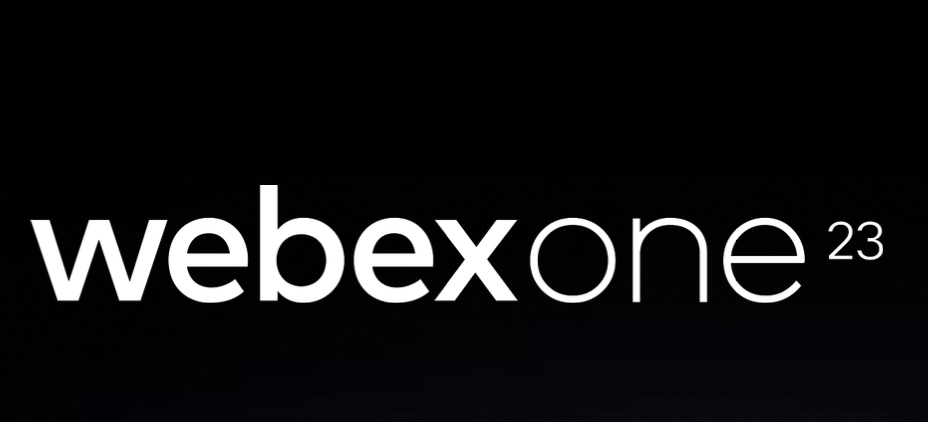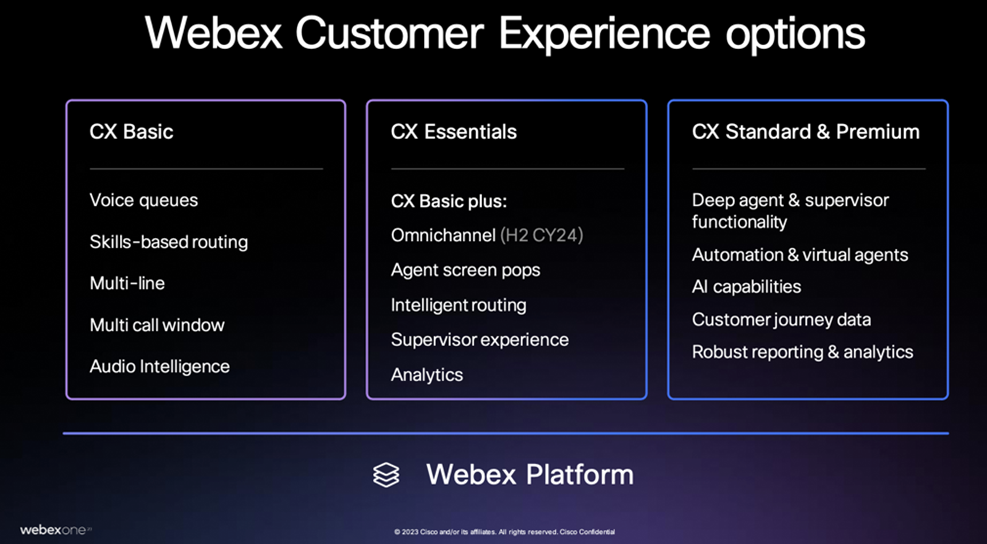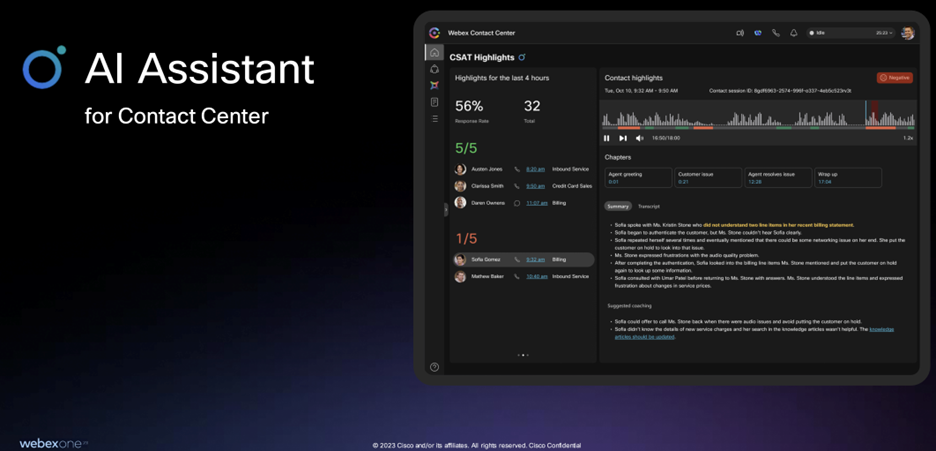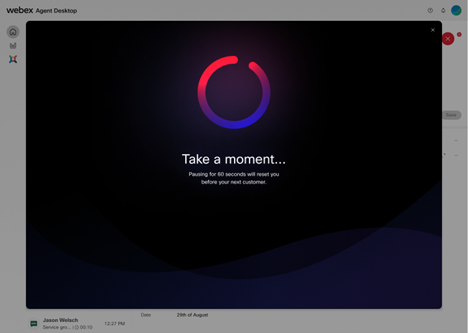Today at WebexOne, Cisco detailed the Webex AI Assistant capabilities to be included within Webex Contact Center and Webex Suite for paying customers. It also announced two new tiers called Customer Experience (CX) Basic and CX Essentials. Prior to this announcement, Webex had a single contact center offering. The two new offerings are meant to meet the needs of customers who don’t want or need to power up to a full contact center but will have situation-specific needs for increased communications.
CX Basic provides what Khan described as light, perhaps temporary, call center capabilities. “Maybe during open enrollment HR needs to add 15-20 employees to take calls and they don't want to buy a full license, so they can get those capabilities,” he said. “It includes things like voice queues, announcement options, welcome messages, estimated wait time messages, call routing, etc.”
This functionality is provided at no additional charge to paid Webex Suite customers, and these features are also available from within Microsoft Teams via the Webex calling plugin.
Priced at $30 per user per month, and available in the first quarter of 2024, CX Essentials fills the middle ground between the new Basic tier and Webex’s full contact center offering. It is designed for customer service-oriented industries and is available for purchase by Webex Calling users.
“What we found was there are certain personas like an engineer who gets pulled into a contact center call to troubleshoot a level two level or three problem,” Khan said. “They don't need a full contact center license so for them, we added CX Essentials. That's why it's more aggressively priced.”
The Webex AI Assistant capabilities will be included within Webex Contact Center. These capabilities include suggested responses, conversation summaries, a low-code virtual agent, AI-powered burnout detection and agent coaching. Note, too, that the Webex AI Codec and the Real-Time Media Models (RMMs) will also make their way into Webex Contact Center. The suggestions, summaries, low-code virtual agents and even agent coaching are already common to other contact center platforms.
The following graphic shows the AI Assistant providing summaries and insights for supervisors. In this case, the AI Assistant shows customer satisfaction (CSAT) highlight for various calls. The supervisor can drill down into each call and see what led to those CSAT scores. The supervisor can focus on listening to the good (green highlights) and bad (red highlights) of those calls (and the entire call, of course) while also reviewing the AI-generated summary of those calls or portions of calls. The Webex platform also enables the supervisor to make highlight reels of the calls which can then be used for coaching and/or training purposes.
Khan said that at present the AI Assistant features are included at no additional charge to paid Contact Center and Webex Suite customers. He said further that they have imposed usage caps on the generative AI features. “We don’t know what the usage is going to be, but we're not trying to monetize it. We want our existing paying customers to have everything they need on a day-to-day basis. But we also want to guard against particular high use cases.”
So, in the future, they may add a usage-based add-on fee, but for now all the functionality is included for paid customers.
Agent burnout detection involves the real-time AI technology in Webex detecting situations and stress indicators in agents that lead to burnout and then suggesting they “disconnect and recharge” (see the following graphic) via a 60-second Thrive Reset video. The agent is temporarily removed from the queue of handling customer interactions until they have “recharged.”
Webex did not provide details on what those stress indicators are, how they are detected, how frequently those indicators need to occur for a reset prompt to occur. Cisco Webex partnered with Thrive Global to provide stress-reducing reset videos. (Thrive has also partnered with Zoom, Genesys and Intradiem.) The agent burnout detection APIs is planned to be in beta in February 2024.
Want to know more?
Stay tuned: Over the next several days NJ will cover the news around WebexOne. You can check out a preview of Irwin Lazar’s session here.













